Facebook page likes should not be a key metric of social media marketing success. Surprised? Most marketers are. Many mistakenly over value the number of page likes, and end up wasting too much time building this number when they should be focused on more effective ways of measuring marketing success.
The Problem with Facebook Page Likes
Facebook is continually decreasing organization’s organic reach, making it harder to reach a sizable audience without paying. As a result, the audience who actually sees your posts is a fraction of your total Facebook audience. Total Facebook page likes, then, provide little insight of the success of your marketing efforts.
 Sure, you want as many followers as possible. But the mere total number of followers does little to reflect your relationship marketing success, which is the driving motivation behind social media marketing. Total page likes show you the number of people willing to connect with your organization, but does little to reflect your effectiveness at actually reaching and connecting with them. Growing your follower count, then, should not be a driving force behind your Facebook marketing efforts.
Sure, you want as many followers as possible. But the mere total number of followers does little to reflect your relationship marketing success, which is the driving motivation behind social media marketing. Total page likes show you the number of people willing to connect with your organization, but does little to reflect your effectiveness at actually reaching and connecting with them. Growing your follower count, then, should not be a driving force behind your Facebook marketing efforts.
Granted, consistent posting on Facebook is still a necessary aspect of social media marketing. Organizations still gain marketing benefits from Facebook, but it is weakened by the limited organic reach. Posting from your business page to your followers is an important aspect of reaching your audience, but it should not be the only aspect.
The Better Tactic
Insert Facebook Groups. These see fantastic online reach since they aren’t saddled with the algorithm-driven reach reduction that business pages are. Groups are joined by individuals interested in that topic, so when you post in a group you’re posting to a great targeted audience.
You can join already established groups or create your own, and there are benefits to both.
 Joining an already established group opens you up to getting your organization’s name seen by new contacts, such as leaders in your industry or potential new customers. You can showcase your value to these individuals by answering questions with your expertise or sharing valuable content from your website. Consistent quality posting can translate into new valuable connections.
Joining an already established group opens you up to getting your organization’s name seen by new contacts, such as leaders in your industry or potential new customers. You can showcase your value to these individuals by answering questions with your expertise or sharing valuable content from your website. Consistent quality posting can translate into new valuable connections.
When you join a group, take some time to familiarize yourself with the group’s tone first. See the general style of writing (formal? casual?), length of post (short and to the point? long and in-depth?), and topics to make sure your posts will match. Be sure to join a few groups and post consistently, rather than joining several but rarely posting. To see the benefits of groups, you’ll need to be active and consistent in them.
In addition to joining relevant groups, you can make your own. The benefit of making your own group is you can reach individuals wanting to connect with your organization more effectively than you can reach individuals from your business page. But you shouldn’t repeat posts from your page in your group since individuals in both will see their newsfeed cluttered with identical content. You can post the same content sparingly, but make sure it’s on different days and worded differently. You want to make sure there is value for individuals to be involved with both your page and your group.
 Measurement of group involvement can be done through a variety of ways, including analyzing engagement on your posts or visits to your site from links posted in the group. Metrics that come from group activity paint a more holistic picture of your marketing success than just page likes, making it a more effective analytic of your social media marketing efforts.
Measurement of group involvement can be done through a variety of ways, including analyzing engagement on your posts or visits to your site from links posted in the group. Metrics that come from group activity paint a more holistic picture of your marketing success than just page likes, making it a more effective analytic of your social media marketing efforts.
Want to take advantage of Facebook marketing, but need some guidance? Alpine Small Business Solutions is here for you! We’d love to assist with this or any aspect of business building. Reach out with a phone call or email today!


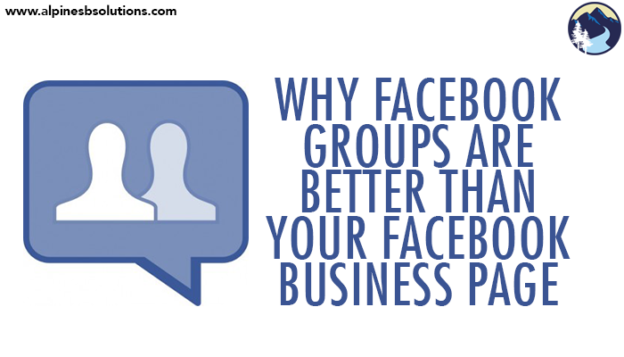

 Burnout feels awful. Awful enough to be a catalyst for promoting positive change. It can force you to change poor work habits (like working through lunch). Or cause you to reassess your priorities (like too much office time and not enough family time). Or even make you re-evaluate whether your current job or projects are what you should be doing.
Burnout feels awful. Awful enough to be a catalyst for promoting positive change. It can force you to change poor work habits (like working through lunch). Or cause you to reassess your priorities (like too much office time and not enough family time). Or even make you re-evaluate whether your current job or projects are what you should be doing.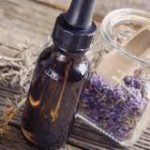 Aromatherapy involves inhaling essential oils (liquids from natural extracts like flowers and fruits). The scent interacts with our body, helping to cause benefits like improving your focus and stimulating your brain. One research study found that lavender and rosemary reduces cortisol levels (the hormone released in fight or flight mode that can be a big mental drain). Smelling certain oils can help give you the jolt of energy you need in a healthier way than turning to excessive caffeine.
Aromatherapy involves inhaling essential oils (liquids from natural extracts like flowers and fruits). The scent interacts with our body, helping to cause benefits like improving your focus and stimulating your brain. One research study found that lavender and rosemary reduces cortisol levels (the hormone released in fight or flight mode that can be a big mental drain). Smelling certain oils can help give you the jolt of energy you need in a healthier way than turning to excessive caffeine. Sometimes just writing down everything you need can help you
Sometimes just writing down everything you need can help you 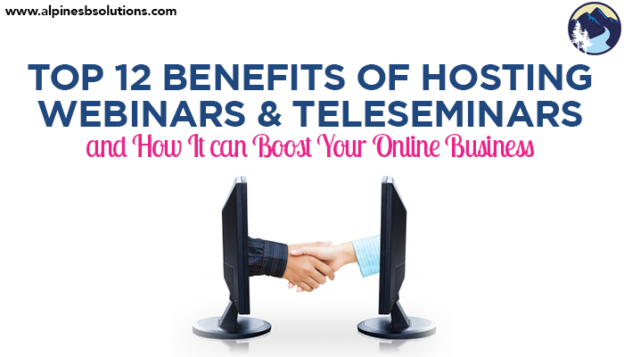
 Teleseminars came first as a way to share information between parties that are not in the same physical location. Teleseminars are fully audio based learning, with the audience listening in through a telephone or computer. Webinars, on the other hand, use audio and visual learning with the listening in through a computer. Each medium offers its own advantages and disadvantages.
Teleseminars came first as a way to share information between parties that are not in the same physical location. Teleseminars are fully audio based learning, with the audience listening in through a telephone or computer. Webinars, on the other hand, use audio and visual learning with the listening in through a computer. Each medium offers its own advantages and disadvantages. A large potential audience. Traditional seminars can cost more money to attend, plus require travel hassles and costs. This can keep individuals from attending. A webinar or teleseminar can be attended from the comfort of a home, making your potential consumer base significantly larger.
A large potential audience. Traditional seminars can cost more money to attend, plus require travel hassles and costs. This can keep individuals from attending. A webinar or teleseminar can be attended from the comfort of a home, making your potential consumer base significantly larger. Would I benefit from audience engagement/feedback in the presentation? Webinars offer tools, such as polls and chat rooms, to gain instant
Would I benefit from audience engagement/feedback in the presentation? Webinars offer tools, such as polls and chat rooms, to gain instant 
 quality. That high quality requires two things: education and experience. Before you can create a thriving social media presence, for example, you need knowledge of
quality. That high quality requires two things: education and experience. Before you can create a thriving social media presence, for example, you need knowledge of  employee performing one task in the production process. This allowed them to gain a mastery over the task and complete tasks faster than if they switched from different task to different task.
employee performing one task in the production process. This allowed them to gain a mastery over the task and complete tasks faster than if they switched from different task to different task. 34 minute blackout. Oreo’s team collaborated and created a
34 minute blackout. Oreo’s team collaborated and created a  Bringing in a team allows you to
Bringing in a team allows you to 
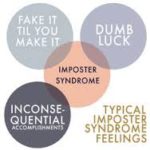 Imposter syndrome is a term often thrown around and splashed in click baiting headlines, leaving people confused as to what it actually is (and whether they’re affected by it).
Imposter syndrome is a term often thrown around and splashed in click baiting headlines, leaving people confused as to what it actually is (and whether they’re affected by it). Imposter syndrome is the little troll on our shoulder feeding us lies about our potential. It keeps us from being the best
Imposter syndrome is the little troll on our shoulder feeding us lies about our potential. It keeps us from being the best  It’s okay to celebrate and take pride in your success. In fact, it’s important for your confidence’s sake to view your success accurately. (That means recognizing the role your ability and
It’s okay to celebrate and take pride in your success. In fact, it’s important for your confidence’s sake to view your success accurately. (That means recognizing the role your ability and  a list of more achievements to feel more confident. But, the problem with imposter syndrome isn’t a lack of success (since it happens with people who are very successful). It’s not being able to internalize accurately those successes. Imposter syndrome won’t go away with more success.
a list of more achievements to feel more confident. But, the problem with imposter syndrome isn’t a lack of success (since it happens with people who are very successful). It’s not being able to internalize accurately those successes. Imposter syndrome won’t go away with more success.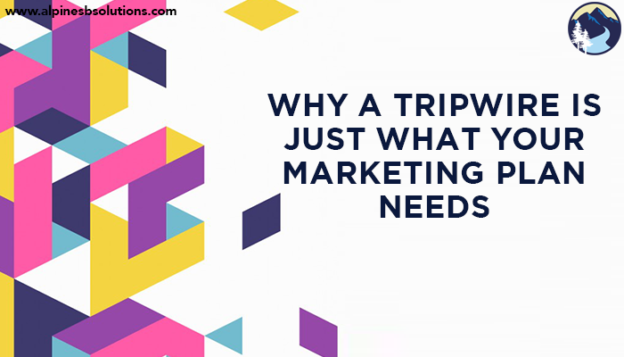
 Tripwires utilize the persuasion principle of consistency. People have a need to rationalize their behavior as consistent, whether they are aware of its impact on their decisions or not. After they agree to a small request, they become more likely to agree to a similar but larger request. They start to feel safe with your company and products. It’s why you may find yourself picking your friend up from the airport a few weeks after you agreed to pick him up for a social outing. As long as the second larger request is similar in nature to the first smaller request, it’s likely individuals will comply.
Tripwires utilize the persuasion principle of consistency. People have a need to rationalize their behavior as consistent, whether they are aware of its impact on their decisions or not. After they agree to a small request, they become more likely to agree to a similar but larger request. They start to feel safe with your company and products. It’s why you may find yourself picking your friend up from the airport a few weeks after you agreed to pick him up for a social outing. As long as the second larger request is similar in nature to the first smaller request, it’s likely individuals will comply. A tripwire also needs to be low risk. It’s great if a
A tripwire also needs to be low risk. It’s great if a  Whichever way you choose the important piece is to follow up. You have a hot buyer…check in when him. Certain tripwires are set up well for an immediate pitch (while you’re buying this dog teeth cleaning, get your dog groomed and covered with flea and tick prevention at the same visit). Others work better as a follow-up (now that you’ve completed our first course, sign-up for the entire program). Find what meets your sale best.
Whichever way you choose the important piece is to follow up. You have a hot buyer…check in when him. Certain tripwires are set up well for an immediate pitch (while you’re buying this dog teeth cleaning, get your dog groomed and covered with flea and tick prevention at the same visit). Others work better as a follow-up (now that you’ve completed our first course, sign-up for the entire program). Find what meets your sale best.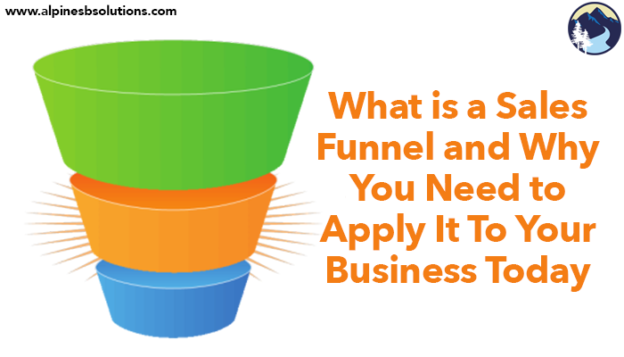
 A sales funnel is an analogy used to explain how the sales process works. It serves as a visual representation of how an individual moves from knowing nothing about your organization to becoming a loyal customer and hopefully brand evangelist for you. The mindset of a sales funnel views sales as a proactive process of making customers (as opposed to the more passive process of finding customers). The underlying goal of the sales funnel is to convert those who are unaware of your organization to happy customers by finding as many
A sales funnel is an analogy used to explain how the sales process works. It serves as a visual representation of how an individual moves from knowing nothing about your organization to becoming a loyal customer and hopefully brand evangelist for you. The mindset of a sales funnel views sales as a proactive process of making customers (as opposed to the more passive process of finding customers). The underlying goal of the sales funnel is to convert those who are unaware of your organization to happy customers by finding as many  become a customer. In situations where contracts need to be renewed or purchases made again, the customer will enter a re-evaluation phase. In some respects, they become a prospect again since they can now evaluate their other options.
become a customer. In situations where contracts need to be renewed or purchases made again, the customer will enter a re-evaluation phase. In some respects, they become a prospect again since they can now evaluate their other options.  number of individuals at each stage, the percent of customers made from leads, and the average time it takes to move a customer down the funnel. Gathering these metrics provides you with a more holistic method of comparison to gauge successful sales efforts than just sales completed. After enough time using the sales funnel, you’ll be able to see a baseline of what you can expect from your sales team. Deviations from this baseline will show you what works well or what needs to be improved in your sales strategy.
number of individuals at each stage, the percent of customers made from leads, and the average time it takes to move a customer down the funnel. Gathering these metrics provides you with a more holistic method of comparison to gauge successful sales efforts than just sales completed. After enough time using the sales funnel, you’ll be able to see a baseline of what you can expect from your sales team. Deviations from this baseline will show you what works well or what needs to be improved in your sales strategy. the numbers will always be high at every phase. The reality, however, is that the numbers fluctuate often. Using a sales funnel highlights areas that should be targeted to get the numbers to where they need to be for effective customer recruitment. If you see you’re lacking leads, you can put more resources into lead generation. If you see you have enough leads but not enough are becoming prospects or committed, you can put more resources into bettering your pitch. If you see enough customers aren’t returning when contracts need to be renewed, you can put more resources into customer service.
the numbers will always be high at every phase. The reality, however, is that the numbers fluctuate often. Using a sales funnel highlights areas that should be targeted to get the numbers to where they need to be for effective customer recruitment. If you see you’re lacking leads, you can put more resources into lead generation. If you see you have enough leads but not enough are becoming prospects or committed, you can put more resources into bettering your pitch. If you see enough customers aren’t returning when contracts need to be renewed, you can put more resources into customer service.
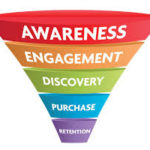 Marketers use tools to nurture leads along each stage of the funnel. Visitors to your site can give their email in exchange for a free downloadable guide (gaining awareness). A follow-up email gives them a curated list of relevant blog articles on the site (gaining interest). A follow-up email to that gives them a case study showing the benefits of your products/services (gaining desire). A follow-up email to that gives them a coupon to buy your products/services (taking action).
Marketers use tools to nurture leads along each stage of the funnel. Visitors to your site can give their email in exchange for a free downloadable guide (gaining awareness). A follow-up email gives them a curated list of relevant blog articles on the site (gaining interest). A follow-up email to that gives them a case study showing the benefits of your products/services (gaining desire). A follow-up email to that gives them a coupon to buy your products/services (taking action).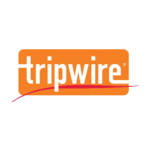 they need to know it exists. Insert the marketing funnel! You can use the marketing funnel to direct people to the end action: acting on the trip wire. Social media, blog posts, emails can all give that push towards buying the trip wire. Not everyone will make it from gaining awareness to making that purchase. But strategic marketing can help get more people to that purchasing point.
they need to know it exists. Insert the marketing funnel! You can use the marketing funnel to direct people to the end action: acting on the trip wire. Social media, blog posts, emails can all give that push towards buying the trip wire. Not everyone will make it from gaining awareness to making that purchase. But strategic marketing can help get more people to that purchasing point.
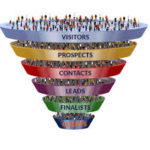 You’ve probably heard this phrase before. Many, many, many times I imagine. Let’s quickly debrief anyway.
You’ve probably heard this phrase before. Many, many, many times I imagine. Let’s quickly debrief anyway. Automation, when done well, can be a marketer’s best friend. First of all, it saves you an immense amount of time. Instead of you sitting down to individually send an email to people at each stage of the funnel, these emails can be sent automatically.
Automation, when done well, can be a marketer’s best friend. First of all, it saves you an immense amount of time. Instead of you sitting down to individually send an email to people at each stage of the funnel, these emails can be sent automatically.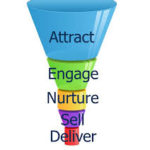 attention (since that “unsubscribe button” is all too easy to press). Send a follow-up email to those who subscribed giving them more helpful information. Nothing sales-y here either! The goal is to intrigue your audience about your brand by showing you know your stuff. Send an email with a round-up of useful articles on the given topic. Share valuable resources. Prove that your emails (and your company) offer value.
attention (since that “unsubscribe button” is all too easy to press). Send a follow-up email to those who subscribed giving them more helpful information. Nothing sales-y here either! The goal is to intrigue your audience about your brand by showing you know your stuff. Send an email with a round-up of useful articles on the given topic. Share valuable resources. Prove that your emails (and your company) offer value.
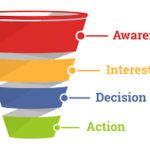 The “
The “ When you create a social media sales funnel, you supercharge your
When you create a social media sales funnel, you supercharge your 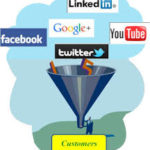 Once you know which channels to be on, you can work on generating that awareness. Facebook ads, for example, can help potential customers discover your page. When applicable, tag other organizations in your posts to help your posts show up on their followers’ pages. Cross promote your social channels through strategies like including the social links in your email signatures or newsletters.
Once you know which channels to be on, you can work on generating that awareness. Facebook ads, for example, can help potential customers discover your page. When applicable, tag other organizations in your posts to help your posts show up on their followers’ pages. Cross promote your social channels through strategies like including the social links in your email signatures or newsletters.